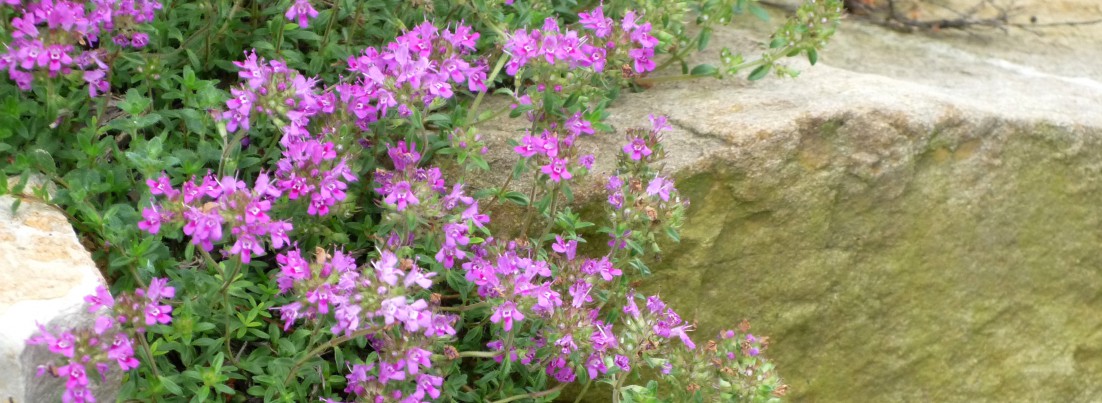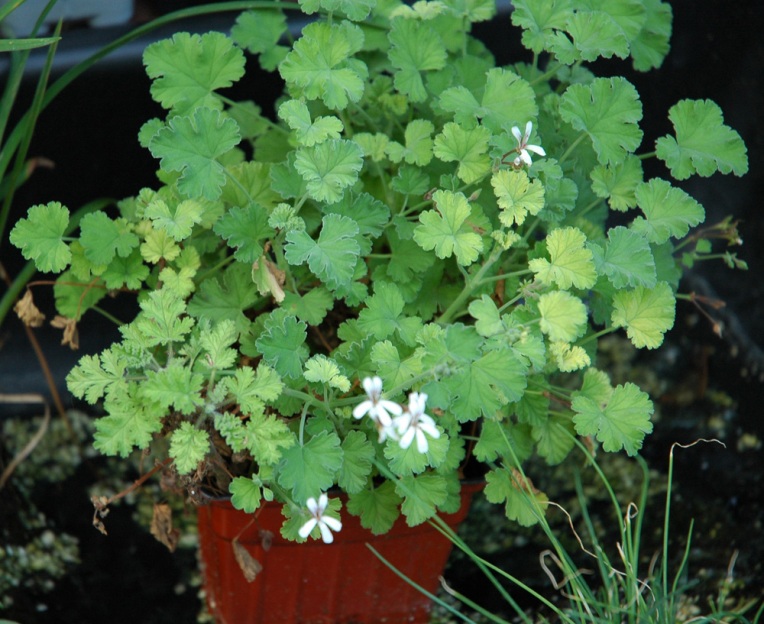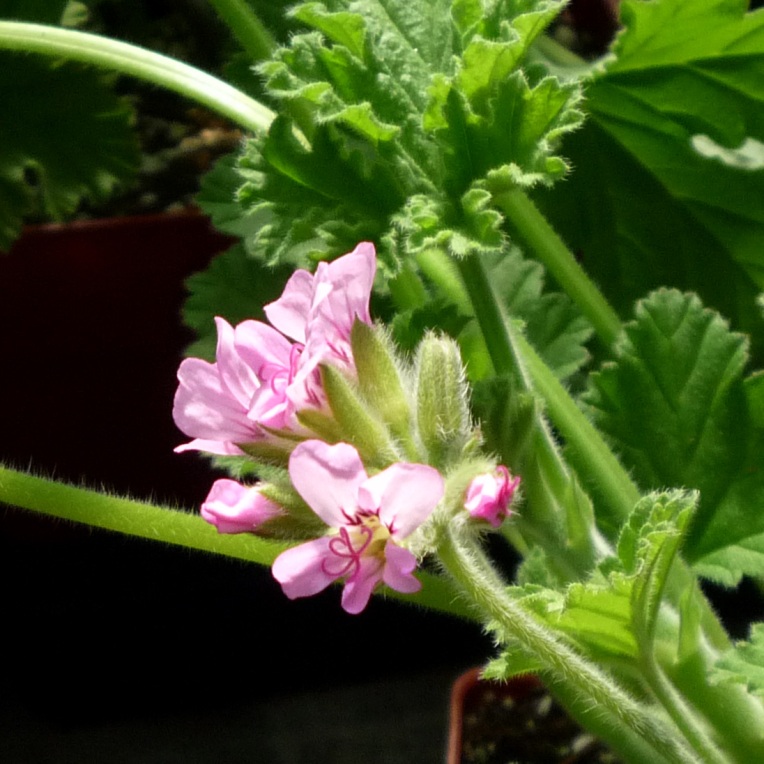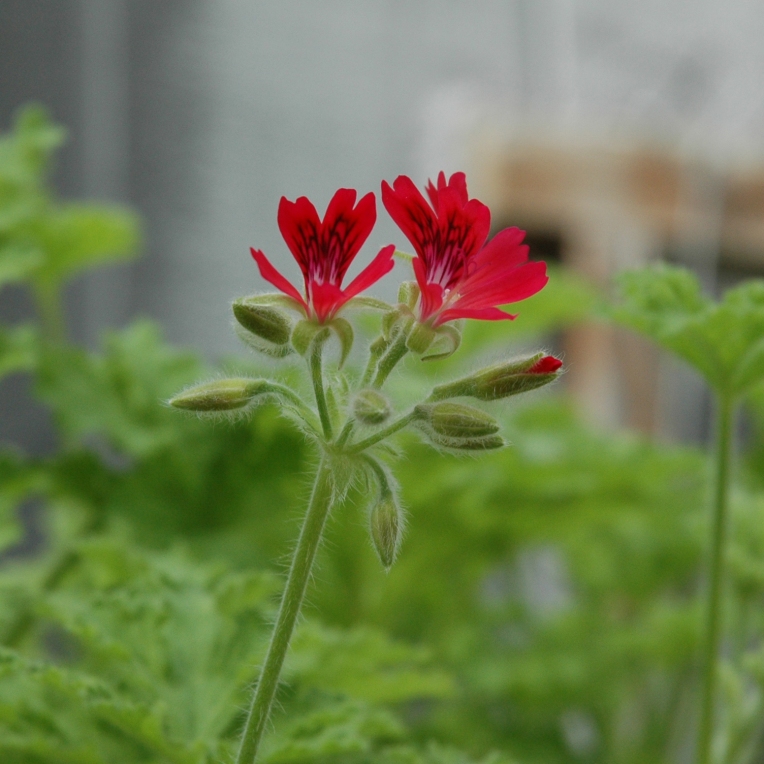Perennial in central PA?
Yes– L. angustifolia, L. x intermedia (lavandin)
No– L. dentata, L. pinnata, L. stoechas
Sun vs Shade?
Grow all lavender types in full sun.
Size? How far apart should I space lavender when planting in the ground?
L. angustifolia will get about 24 inches across. Space at least 20 inches apart (measuring from the center of the plant). L. x intermedia (lavandin) can easily reach a diameter of 30-36 inches; space two feet or more apart. The other species are annual, and will not get very large over the course of a summer. You can crowd these a little more– plant around 6-8 inches apart. If you keep your plants trimmed, you can better control their size to work with the space you have available (more on the benefits of that, below). If you don’t want your plants touching, allow more room, but if you want a hedge-like effect plant as directed or slightly closer.
If you’re planting smaller lavender (such as our standard 4″ pot), it can be hard to envision how big they will get. If the garden looks bare, fill in with annuals that you’d have to replace next year anyway (marigolds, geraniums, other bedding plants– this is a great way to introduce color), with annual lavender, or with low-growing/creeping thyme. I think thyme is incredibly underestimated as an ornamental– it grows quickly, flowers prolifically, and when your lavender gets bigger the thyme can often continue growing underneath.
My project from last summer: I planted 4″ lavender 18-20 inches apart, then went back and planted two more in the gap. (And then some thyme, too.) It might take them a few years to fill in, and once they get crowded I plan to dig up the extras and move them elsewhere. Other customers have reported varying amounts of success with transplanting established lavender plants, so that might be worth a shot. If you’re worried about the transplants surviving, try something a little more forgiving, like mint or oregano.
Other planting advice?
Plant any time in the summer. Our last frost can be as late as Memorial Day, so plan on planting in June at the earliest. I have planted lavender in September and had it survive, but I don’t recommend fall planting. Your plant needs time to get established and put out good strong roots for the winter. In my case it was a very warm fall.
Lavender dislikes having wet feet– for best results choose an area with good drainage. My backyard transitions randomly between shale and clay, which isn’t good for most herbs; I prepared my chosen planting area by chopping up the clay, removing a lot of it to a depth of a foot or so, and then mixing the remainder with generous portions of sand, peat moss, mushroom compost, and topsoil. Everything is thriving!
I said ‘good drainage’– this does NOT mean, ‘don’t water’. If lavender is continually allowed to dry out to the point that it wilts or -even worse- goes crispy, you will kill it. If it makes it through the summer, it will probably not come back in the spring. If it does, it will not be pretty. Do not kill your lavender! Good drainage means that the water has a chance to get sucked up by the roots, but doesn’t stay there to drown them. Clay is not good; it stays wet too long, and then dries out as hard as a rock. Water your lavender every day, or every other day– there is no hard and fast rule, you will have to create a schedule based on your lavender’s needs. Let the soil dry out a bit between waterings, but don’t let the plant wilt. You may find that the plants need water daily starting out and then require less as they become established.
Plants are like people, if you leave them out in the sun all day long with no water they will get dehydrated. Dehydration can kill. Drowning can also kill. If you dry up your plant really badly, panic, and water the heck out of it, it might perk up a bit, but will most likely die in several weeks. This cycle of drying and soaking weakens it and leaves it open to disease and rot.
Cutting back lavender, or Aaaahh! It’s too pretty to cut!!
It’s true. You will not want to cut back your lavender. But it’s really better if you do. Cutting it back will keep it nicely shaped; if lavenders get too big and leggy they will fall open in the center, showing off bald lower branches instead of healthy growth and flowers. If your lavender has reached this point, cut it back gradually so that there are always buds on the trunk (indicating new baby branches) as well as healthy leaves and stems. Eventually you can encourage the lower bare part of the trunk to put out fresh growth.
You can start out with cutting the plant back after it has done flowering, if you haven’t been cutting off the flower stems for bouquets or other projects. If you look at the stem, you’ll see that the flowers form a whorl at the top of the spike. The stem below is leafless for several inches, is punctuated with a single pair of leaves, is bare for another inch or two, and then shows more leaves and branches. That’s where you want to cut the spike off– where that dense branching is, not up by that lone pair of leaves.
At the end of summer or beginning of fall, before the first frost, you should cut the plant back for the winter. I read somewhere that you should cut back lavender by two-thirds of that year’s growth. It works wonders, but you can cut off less if you’re unsure. Cut it off like I mentioned above– never cut a branch back to the point that it doesn’t have leaves, because how will it photosynthesize? Always leave stems with leaves, even if it’s shaped funny– you can always trim it up later when there are enough good branches filling in the gaps.
If you don’t get this done in the fall, definitely do it early in the spring once the plant cracks open some new leaves- the longer you wait, the more it will delay your flowering time.
What can you use lavender for?
One of lavender’s greatest strengths comes from its beauty as a landscape plant. They’re beautiful on their own, and stunning en masse. I have a row in alternating colors, with a line of roses planted behind–there are no words to describe how lovely it looks! Mine have been established for several years, and bloom twice each summer.

Flowers and leaves can be used in tea; I’ve seen the flowers used in recipes for cookies, ice cream, jelly/jam, and flavored vinegars. Lavender honey is quite tasty. Dried leaves and flowers can be used in potpourri or in sachets for freshening clothing/repelling insects.
While I do not feel qualified to suggest medical uses I will say that I’ve used lavender essential oil and, in a pinch, fresh bruised leaves to soothe bug bites and bee stings.
——————————————————————————
Part 1: Species Overview & Top Varieties
Part 3: Flowers
To see all 2010 plants, check the Complete List of Varieties.





































